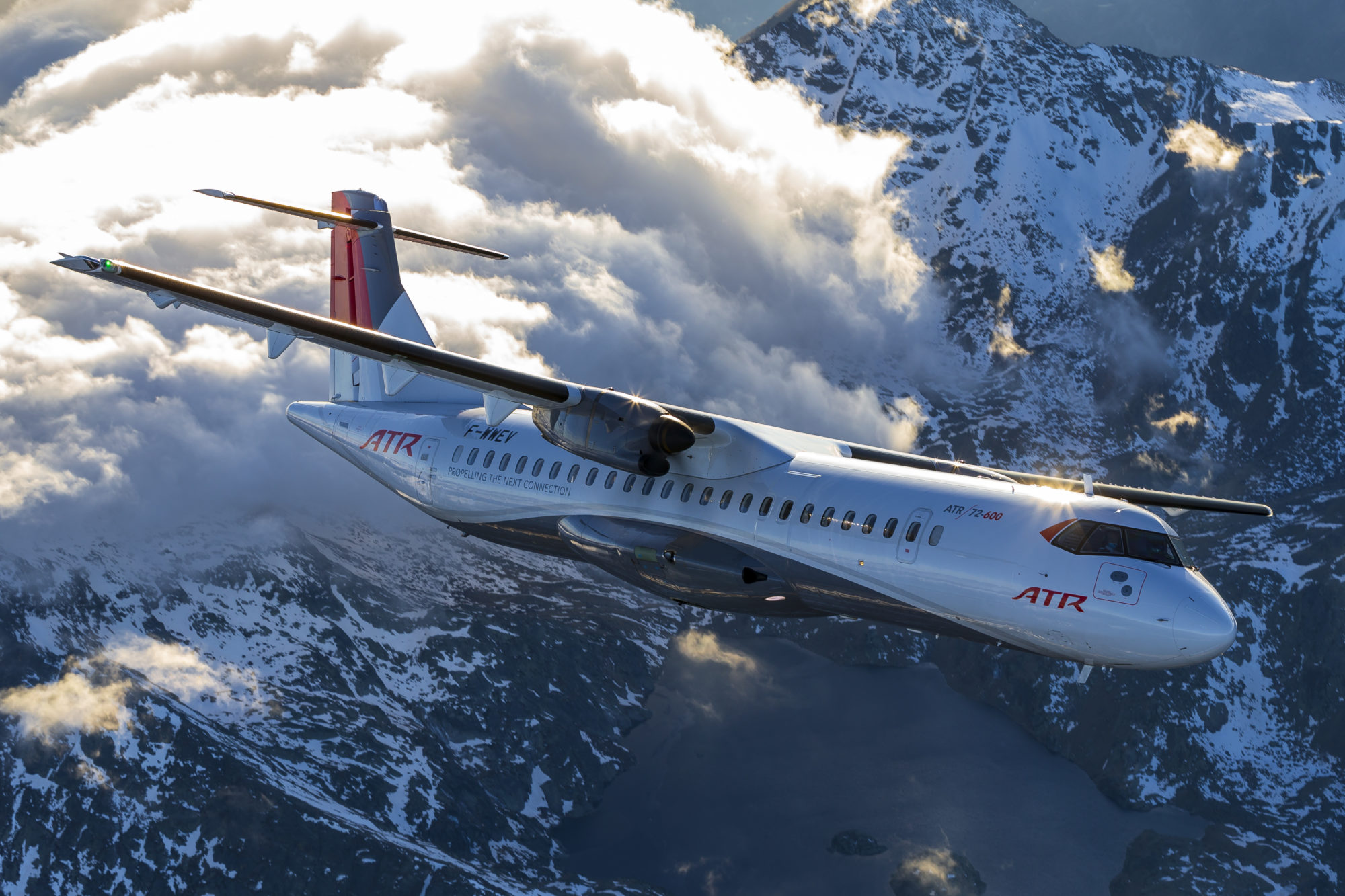Source: ATR
- Paving the Way for Responsible Regional Aviation
With a steadfast commitment to further connecting people and businesses in a responsible and affordable manner, ATR is continuously evolving its products to cater to the current and future needs of our customers worldwide. Our Product Development strategy relies on our ambition to continue offering flexible and versatile solutions to our customers, whilst dramatically reducing CO2 emissions and operating costs.
In the short-term (2022 to 2025), we are focusing on continuous improvements of our product offering. Our aircraft are already the lowest emission regional aircraft on the market, and they produce no contrails. Thanks to the recently introduced PW127XT engines, the ATR 72-600 boasts a remarkable 45% reduction in CO2 emissions per trip compared to similar-size regional jets, resulting in 69g of CO2 emitted per seat per kilometre.
We’re also looking at further improving our accessibility to the shortest runways, from 1,050m today down to 800m with the ATR 42-600S – Short Take-Off and Landing, to enter into service in 2025. In terms of passenger comfort, the ATR Highline collection has been specifically designed for air carriers seeking to offer a VIP passenger experience to their guests.
To further reduce emissions, ATR is committed to achieving 100% drop-in Sustainable Aviation Fuel readiness by 2025. Successful tests have already been performed, and we were the first to fly a commercial aircraft with 100% SAF in both engines in June 2022.
“Looking towards the mid-term strategy in 2030, ATR envisions the introduction of the ATR EVO, and the technology we are investigating is based on mild hybridisation. The plan is to combine a new efficient thermal engine with an electrical motor and batteries. This will enable us to optimise the engine core size while the use of electrical power will maximise the overall efficiency of the propulsive system. Designed to significantly reduce CO2 emissions (-20% compared to current aircraft) and operating costs while enhancing aircraft performance, the ATR EVO will also feature an eco-designed cabin. We aim for an entry-into-service at the 2030 horizon” explains Giovanna Ferraro, ATR’s Head of Future Projects and Research & Technology.
She continues: “Continuing our vision into the future, beyond 2035, ATR plans for further developments by leveraging the ATR EVO’s readiness to incorporate disruptive technologies when available. We will continue forging strong collaborations to accelerate progress on low-emission technologies, and focus on key Research and Technology activities. This proactive approach aims to ensure that ATR remains at the forefront of low-emission aviation.”
While ATR’s turboprops are currently the most efficient and lowest emission regional aircraft available, we intend, through our Product Development strategy, to bridge the gap with future disruptive technologies by implementing sustainable intermediate steps before the end of the decade.

